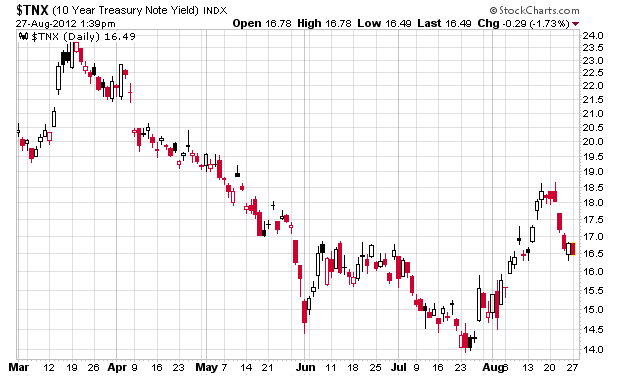Assurant (NYSE: AIZ) is a diversified insurance company with the majority of its profits in the specialty property market.
When looking at the metrics, the company is in very good shape financially and taking all of its assets and liabilities at face value, you have a corporation with a tangible book value of about $49.13/share, using the June 30, 2012 share count. When considering the market value of the shares are about $34/share and considering the company is slated to earn about $6/share in this fiscal year, it makes you wonder why the market is so severely underpricing the company.
There has been persistent stories for the past couple years from state regulators that have been pursuing the company over pricing of its forced-placed insurance, which are policies that are written when a homeowner no longer has insurance on his mortgaged properties – the lender can place the policy on the home to insure their (financial) interests in the property. The forced place policies were apparently too profitable for the firm.
If this turns into a reduction of premiums, or penalty, or both, it will have a material impact on the company’s financial statements, but there is a huge valuation cushion that makes it seem unlikely it will go beyond the large discount presently placed on the shares of the company.
Notably, the company has been buying back its own stock in a very aggressive manner. The following are the basic shares outstanding as of the end of the quarter:
Q3-2010 106,474,301
Q4-2010 102,000,37
Q1-2011 97,931,049
Q2-2011 94,994,982
Q3-2011 92,926,138
Q4-2011 88,524,374
Q1-2012 86,508,372
Q2-2012 82,392,454
On July 26, 2012, the company had 81,084,645 shares outstanding.
Normally I am not a fan of management buying back its own stock, but when a company is trading at 30% below tangible book value, every dollar spent on its shares purchases about $1.43 of value. Assuming you have your assets and liability structure correctly calculated, each share purchased increases the book value further. Considering that the company has historically generated cash at an impressive rate, it makes a compelling value argument.
The risk in this company appear to be in the regulatory aspects of their property insurance. It almost reminds me of what happened with Philip Morris (now Altria Group, NYSE: MO) back in the early 2000’s when they were in the middle of their litigation with the US government. Although their business metrics were fantastic, their shares relative to the valuation were in the gutter. This appears to be the same case with Assurant.
One technical analysis negative is that the company is a listed S&P 500 component. Since its market cap is well under the prescribed $5 billion level, it may get demoted to the midcap index – this typically causes a rush of advance selling as traders anticipate the supply dump from index funds removing the component. It would probably be a good time to make an entry at this point.
That stated, I am a little impatient and started a position around $34/share. I normally do not deal with S&P 500 companies, but sometimes I do make exceptions.

